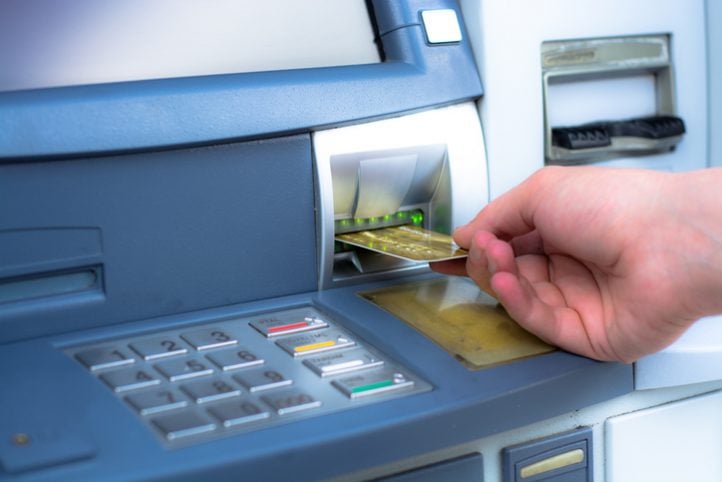Financial services were always due for a shakeup but this is happening in the midst of a banking revolution.

Picture for illustration purposes. Picture: iStock
Some may remember when banking was done only physically, face-to-face, and in a building made of brick, mortar, steel and glass. What they may not know is that it was an era that lasted from the opening of the first deposit bank in Italy in system in 1407 all the way to 1980.
That was the year computer banking was introduced by a community bank in the United States for the first time and expanded worldwide through a text-based system called videotex. It came to South Africa in 1986 as Beltel, and was the precursor to full online banking.
Along with ATMs, telephone banking, and call centres, it ushered in the era of self-service banking. Web-based banking may have felt like a bigger shift, but it was part of that second revolution.
However, the real modern banking revolution began in 2008 with the arrival of Apple’s App Store and today most people with a bank account access it via an app.
Think about it: the first era lasted almost 600 years. The second, a mere 18 years. Banking 3.0, as it is known, has now been with us for 12 years.
In the context of such acceleration, the next revolution seems overdue. In reality, it has already started, says global trends commentator Brett King, author of the book Bank 4.0. The subtitle sums up his argument: “Banking Everywhere, Never at a Bank”.
In other words, the physical bank has started vanishing. Thanks to the Covid-19 crisis and at least 12 to 18 months of social distancing ahead of us, it may disappear altogether. King underscored this view during the Huawei Southern Africa FSI Summit 2020 last week, at which he presented to an African audience remotely from New York.
“The accepted wisdom is that the digital changes we’ve seen since the internet came out in 1995 are accelerating as a result of coronavirus, particularly with the lack of access to physical offices and physical branches.
“In places like China, cash has become an anathema. People don’t want to deal with cash because it represents a transmission vector, potentially, for the virus.”
King makes the point that a large percentage of bank branches already operate at low profitability, but are sometimes are required by law to remain open.
Covid-19 has removed this requirement, opening the way for a flood of new banks that don’t depend on physical infrastructure. South Africa last year saw the arrival of its first digital-only bank, TymeBank. In future, most new banks are likely to be purely digital.
Such entities are known as “challenger banks”, and they have one compelling differentiation: a better user experience. And now, it gets truly interesting, as the use of new technologies move from a nice-to-have to a have-to-have.
“When we see the emergence of new technologies like artificial intelligence, smart glasses potentially in the middle of the decade, and other progressive applications of fintech technology, we’re going to see more and more reliance on mobile engagement.”
It is one category of technology where the African continent is ahead of the world, and it provides a deeper lesson.
“We see a pattern of innovation in Africa, that has really led the world in many respects. For example, M-Pesa, which is considered one of the top mobile money programs in the world still today, with about 98 or 99% of the Kenyan adult population now having a mobile money account, compared with 24% before.
“But in reality, M-Pesa came about in some respects because of the political violence that occurred in2007 around the elections. So we have a pattern of innovation coming out of crises around the world. And that’s a key driver.”
A further lesson, says King, has been helped along by an ex-South African: Elon Musk.
“The most innovative technologies we see throughout history all share a single trait. Take the creation of the SpaceX rocket program, which did not take an existing business and try to adapt to new technologies, which we call design by analogy.
“The most disruptive innovations throughout history, like the Telegraph line, the automobile and SpaceX rockets, are based on an engineering technique called first principles design.
“That is where you analyse the problem based on a set of new technologies that have become available and, rather than adapting our business to new technologies, we see new businesses starting from scratch. We’re starting to see the emergence of first principles design coming into the banking sector as well.”
The emergence of the smartphone industry was the clear opportunity for revolutionising payments, but the traditional banking industry missed the boat completely.
“The card schemes and the banks and the regulators around the world forced the industry to iterate on the existing plastic card model. So they stuck a card inside the phone, because most of these card schemes wanted to keep access to the point of sale, and therefore generation of interchange revenue, as a core element of payments for the retail and consumer experiences.”
The result is that China, where the card business was just emerging at the time, took to mobile payments as a more efficient alternative.
“In countries like Nigeria, Ghana, Kenya, South Africa and others, you see a real shift in people moving to mobile commerce wherever possible. The behavioural shifts we’re seeing are not just around e-commerce, but around the use of online and mobile banking and the decline in the use of cash.
“The declining use of physical branches is likely for many customers to remain a permanent feature of their lives.”
Arthur Goldstuck is founder of World Wide Worx and editor-in-chief of Gadget.co.za. Follow him on Twitter and Instagram on @art2gee
For more news your way, download The Citizen’s app for iOS and Android.
Download our app